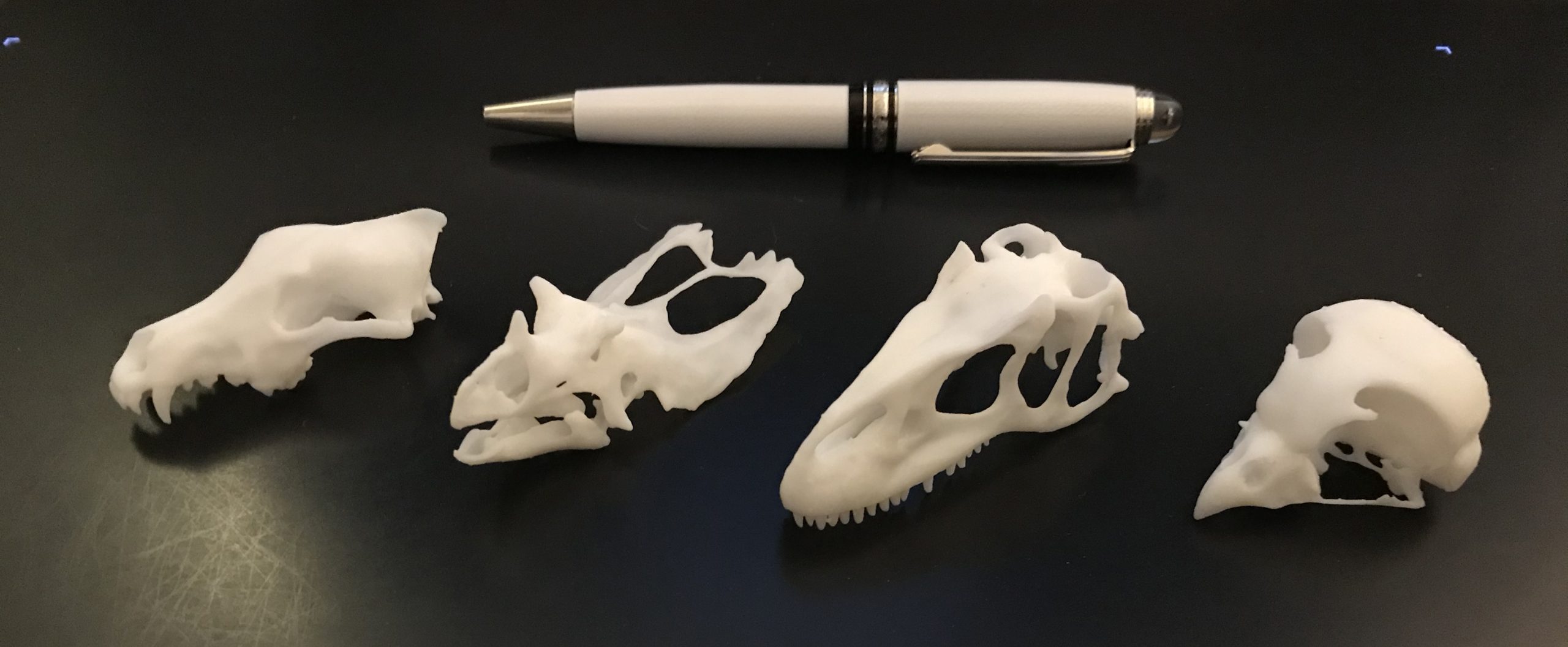Geoscience is a three-dimensional discipline. So 3-D modeling, in the form of virtual and 3-D printed real-world models, has found a home in the U’s Department of Geology and Geophysics. During the COVID-19 pandemic, instructors expanded their 3-D modeling efforts to continue to provide students a hands-on experience, while minimizing the number of hands on any one object.
Sarah Lambart – Modeling rocks and minerals
Students of mineralogy and petrology traditionally learn to identify minerals and rock textures using hand samples and thin sections viewed through microscopes. For classes during the pandemic, both undergraduate and graduate students from the department worked on the development of a virtual library of rock, mineral and fossil hand samples, available here.

PHOTO CREDIT: Sarah Lambart
A sample of olivine basalt from a 2018 volcanic eruption in Hawaii. Explore the 3-D model of this rock (H10) above.
In 2020-21, four classes used the digital library, in what assistant professor Sarah Lambart calls an “initial exploratory effort,” that was partially funded by an internal University Teaching Grant. Instructors improved the scale and resolution of the library, and are now working to redesign laboratory assignments around the digital models. “In particular,” Lambart says, “we plan to couple the 3-D models with images of petrographic (microscopic) thin sections from the same samples to provide multi-scale resources for these classes.”
Future high-resolution additions to the collection will include samples from Utah with detailed petrographic, geochemical and stratigraphic information. “We want to highlight Utah samples that students can relate to from places they commonly visit,” Lambart says.
Jeff Moore – Modeling arches

PHOTO CREDIT: Jeff Moore
3-D printed models of rock arches.
It’s hard to wrap a tape measure around a massive natural arch. That’s why associate professor Jeff Moore and his research team use 3-D modeling instead to capture the geometry and structure of arches and other rock formations. “We typically use drones to capture images of all angles of these features, then 3-D modeling software to generate the geometries,” he says. We post these on Sketchfab, which helps us to be able to fly around each landform and look at it from all angles, as well as to share publicly.” The models have phenomenal scientific value, and are relatively easy and inexpensive to produce.
The arch models have come in handy for outreach events. 3-D printed versions give people a chance to touch and interact with a feature, Moore says, and during the COVID-19 pandemic the researchers have shared the virtual models with colleagues and students. It’s a way for people all around the world to experience Utah’s redrock landscape.
“Kids love the VR experience,” Moore says. “They always giggle and holler at the sensation of heights they get when exploring 3-D arch models.”

